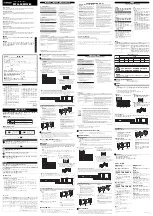
UMTS/HSPA+ Module Series
UG89 Hardware Design
UG89_Hardware_Design 37 / 73
In order to offer good ESD protection, it is recommended to add a TVS diode array whose parasitic
capacitance should not be more than 15pF. The 0
Ω resistors should be added in series between the
module and the (U)SIM card to facilitate debugging. The 33pF capacitors are used for filtering
interference of GSM900MHz. Please note that the (U)SIM peripheral circuit should be close to the
(U)SIM card connector.
The pull-up resistor on USIM_DATA can improve anti-jamming capability of the (U)SIM card. If the
(U)SIM card traces are too long, or the interference source is relatively close, it is recommended to
add a pull-up resistor near the (U)SIM card connector.
3.9. USB Interface
UG89 provides one integrated Universal Serial Bus (USB) interface which complies with the USB 2.0
specification and supports full-speed (12Mbps) and high-speed (480Mbps) modes. The USB interface can
only serve as a slave device and is used for AT command communication, data transmission, software
debugging and firmware upgrade. The following table shows the pin definition of USB interface.
Table 15: Pin Description of USB Interface
For more details about the USB 2.0 specifications, please visit http://www.usb.org/home.
It is recommended to reserve the USB interface for firmware upgrade on
customers’ designs. The following
figure shows a reference circuit of the USB interface.
Pin Name
Pin No.
I/O
Description
Comment
USB_DP
48
IO
USB differential data (+)
90Ω differential
impedance
USB_DM
49
IO
USB differential data (-)
90Ω differential
impedance
USB_VBUS
47
AI
USB connection detection
Typical 5.0V
















































